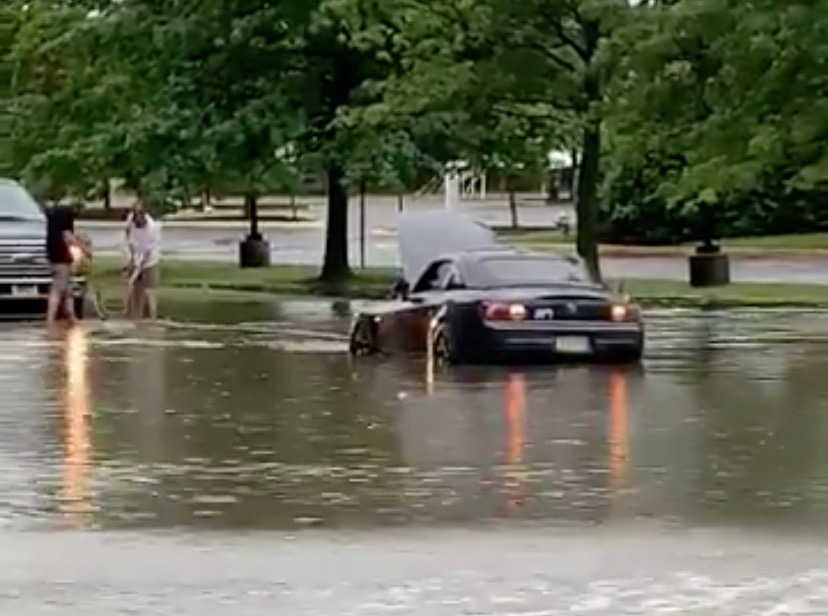
Follow instructions from public safety officials.Continue to monitor the media for emergency information.Conditions may change quickly, so be prepared to evacuate to a shelter or a neighbor’s home if necessary. If told to shelter in place, listen to local television or radio for updates.

Roads and bridges may be washed out or structurally unsound. If the water is rising inside the vehicle, seek refuge on the roof. If your vehicle is trapped in rapidly moving water, stay in the vehicle. Cars can be swept away in only two feet of moving water.

Remember the phrase “Turn Around, Don’t Drown!” Don’t drive through flooded roads.Six inches of swiftly moving water can knock you off of your feet. Most drownings occur during flash floods. If you must evacuate or are traveling during flooding, remember:.If you must evacuate your home, take only essential items and bring your pets if safe to do so.If advised to evacuate, do so immediately. Continue to check the media for emergency information.Move immediately to higher ground or stay on high ground.What to do During a Flood Warning or Flash Flood Warning These areas can flood rapidly and with little warning. If you have a sump pump, check that it is working.Ĭonsider clearing street catch basins to prevent or reduce street flooding.Īvoid camping or parking along streams, rivers, creeks, or other areas prone to flooding during heavy rainfall. But, do not touch electrical equipment if you are wet or standing in water.Įlevate items stored in your basement to prevent damage. Tie down or bring in outdoor objects (patio furniture, children's toys, trash cans, etc.) that could be swept away or damaged during flooding.Ĭonsider unplugging sensitive electronic equipment before flooding occurs. Listen to a National Oceanic and Atmospheric Administration (NOAA) Weather Radio or to a local news station for the latest information.įollow instructions given by public safety officials.īe alert to changing weather conditions and be ready to move to higher ground. What to do During a Flood Watch or Flash Flood Watch Flood insurance is available in most communities whether or not your building is in a flood-prone area, but there is a 30-day waiting period before it goes into effect. Consider purchasing flood insurance through the National Flood Insurance Plan (NFIP). Flood losses are not typically covered under renter and homeowner’s insurance policies.Make a record of your personal property by taking photos or videos of your belongings.If you live or work in a flood zone, hurricane evacuation zone, or an area that is prone to flooding, you should be prepared to evacuate.Have a plan to go to higher ground quickly if necessary.Create and review your family emergency plan.

Contact your local Emergency Management Director to find out if your home or workplace is downstream from a dam and learn more about your community’s risk of flooding.Explore the Federal Emergency Management Agency’s (FEMA) flood maps. Find out whether your property is in a flood-prone or high-risk area.Be informed by receiving alerts, warnings, and public safety information before, during, and after emergencies.


 0 kommentar(er)
0 kommentar(er)
